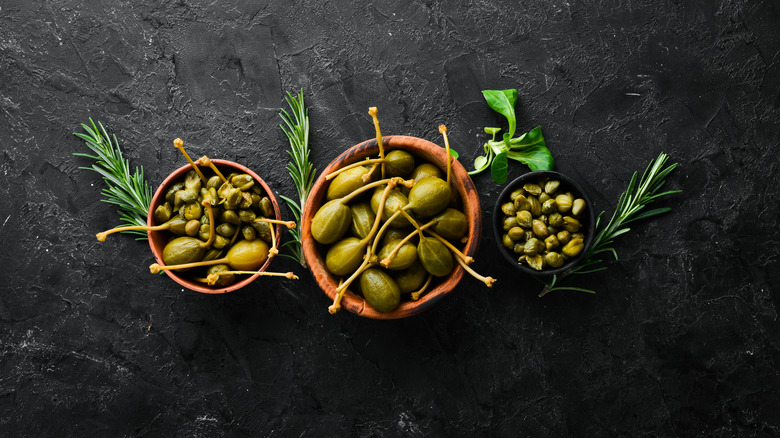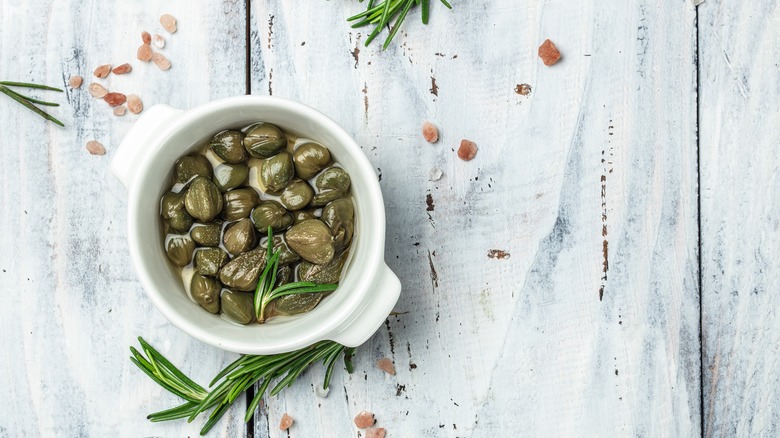Non-Pareil Vs. Grusas Capers: What's The Difference?
Capers are tiny, dark green, unripe flower buds from the Flinders rose shrub. According to Food Network, the plant, also known as a caper bush (capparis spinosa), is native to the Mediterranean coast, and to parts of Asia. It has glossy green leaves and spiky thorns on its twisted wood stems. When the flower buds are harvested, they are dried and packed in salt or brine, preserving their unique herbal, lemony, floral, tangy green olive flavors (per The Spruce Eats). If allowed to bloom, the shrub displays gorgeous flowers with four large white petals that open up like a saucer to reveal dozens of bright purple stamens inside (pictured). The flowers eventually produce delicious seed pods called caper berries that are the size of small olives.
Capers are found in seafood and pasta dishes from the Mediterranean coast such as pasta puttanesca, according to Serious Eats. They also offer a burst of flavor to a Niçoise salad or fried until crispy and sprinkled on a wood-fired prosciutto and buffalo mozzarella pizza. Capers are a beautiful accompaniment to smoked and cured lox alongside shaved red onion, a sprinkling of dill, and a cream cheese schmear, on a perfectly toasted bagel. Creative mixologists add caper garnishes rather than green olives to classic martinis to make the, perhaps, aptly named "Filthy Martini."
Capers come in six sizes
The smallest capers available are French non-pareils. According to The Spruce Eats, non-pareils are the most costly too. They are petite, just ¼ inch (seven millimeters) in length, and are firm, deep green, with delicate aromatic notes. People who enjoy capers were likely introduced to them through these tiny delicacies. Non-pareils can be found in small glass jars packed in a sour salty brine preservative.
Surfines capers are just slightly larger, measuring seven to 8 millimeters in diameter, and are brined or packed in salt. Surfines capers can be found in specialty food shops. Cupacines capers are the next size up, at 8 to 9 millimeters, followed by capote capers, at nine to 11 millimeters, and fines, ranging from 11 to 13 millimeters. Cupacines, capotes, and fines capers can be difficult to find in grocery or specialty food stores.
Grusas are the largest caper variety, often going beyond a gargantuan 14 millimeters in diameter. According to Food Network, larger capers are more acidic. And, Grusas capers are also rare, making them challenging to find in the United States.
To use capers, rinse the salt of brine off of the buds before adding them to your favorite dish, blending them into tapenade, or garnishing your next cocktail. Keep opened capers refrigerated. They will last up to six months for salt-packed capers and nine months for brined capers, once opened, per Short Fact.

